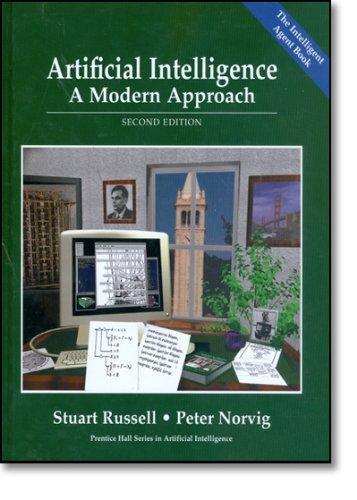Here are two sentences in the language of first-order logic: (A):vx 39 (x 2 y) (B):jy vx
Question:
Here are two sentences in the language of first-order logic:
(A):vx 39 (x 2 y)
(B):jy vx (x 1 Y)
a. Assume that the variables range over all the natural numbers O,1,2, . . . , m and that the
">" predicate means "is greater than or equal to." Under this interpretation, translate
(A) and (B) into English.
b. Is (A) true under this interpretation?
c. Is (B) true under this interpretation?
d. Does (A) logically entail (B)?
e. Does (B) logically entail (A)?
f. Using resolution, try to prove that (A) follows from (B). Do this even if you think that (B) does not logically entail (A); continue until the proof breaks down and :you cannot proceed (if it does break down). Show the unifying substitution for each resolution step.
If the proof fails, explain exactly where, how, and why it breaks down.
g. Now try to prove that (B) follows from (A).
Step by Step Answer:

Artificial Intelligence: A Modern Approach
ISBN: 9780137903955
2nd Edition
Authors: Stuart Russell, Peter Norvig






